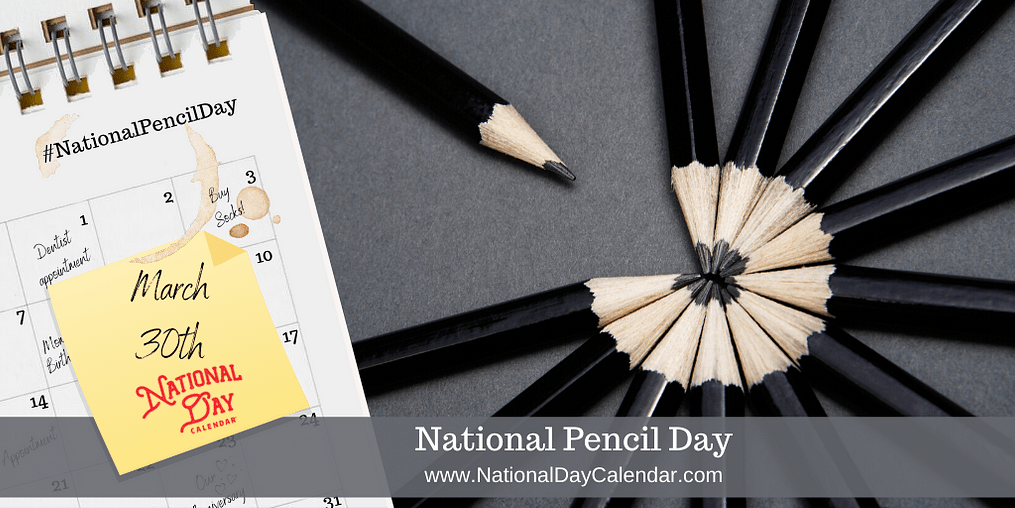You’re so on point
March 30th is National Pencil Day!
On National Pencil Day jot a handwritten note to a friend or gift them with a pack of pencils that will remind them just how amazing they are every time they use them. Either way, pencil it it!

NATIONAL PENCIL DAY
Each year, March 30th National Pencil Day honors the writing utensil that has done more than just teach millions the alphabet and draw straight lines. It’s also helped win wars and enabled amazing art.
Hymen Lipman received the first patent for attaching an eraser to the end of a pencil on this day in 1858. Before that time, pencils and erasers existed separately. Lipman combined the two making two tools much more convenient to use. The intuitive businessman also manufactured envelopes for his stationery shop and was the first to add adhesive to the flap of envelopes.
World War II Pencils
During World War II, Cumberland Pencil Company out of Kenswick, England produced pencils that were designed to function. However, the pencils were hollow with graphite on either end. Between the graphite, the makers had stowed maps to aid captured military personnel in their escape to freedom. Charles Fraser Smith designed them in 1942 and at night, when the factory closed, workers would assemble them under secrecy. The miniature maps detailed escape routes from prisoner of war camps and also included a miniature compass. Throughout the war, these small tools were issued to members of the Royal Airforce and sent to POW camps.
Pencil Art
Pencils have always been a necessary tool for creative people. Artists often pick up a pencil to scratch out a rough outline of an idea. However, those who live for the pencil know the feel for graphite. The black and white medium brings out beautiful works of art that achieve phenomenal depth. It’s also one of the first art classes many of us take. However, the carpenter requires a pencil for marking a piece, too. Whether working on a carving or building a piece of furniture, the masterpiece will require a pencil. And then, the overachievers of the world see the pencil as art. They get right to point and place the art on the very tip of the pencil’s tip. Miniature art carvings fascinate and amaze us.
Pencil Facts
In the United States, most pencils are painted yellow. It is believed this tradition began in 1890 when the L & C Hardtmuth Company of Austria-Hungary introduced their Koh-I-Noor brand, named after the famous diamond. They intended the pencil to be the world’s best and most expensive pencil. However, other companies began to copy the yellow color so that their pencils would be associated with the high-quality brand.
Notable pencil users (Wikipedia)
- Thomas Edison had pencils specially made by Eagle Pencil. His pencils were three inches long, thicker than standard pencils, and had softer graphite than typically available.
- Vladimir Nabokov rewrote everything he ever published, usually several times, by pencil.
- John Steinbeck was an obsessive pencil user and is said to have used as many as 60 a day. His novel East of Eden took more than 300 pencils to write.
- Vincent van Gogh used only Faber pencils as they were “superior to Carpenters pencils, a capital black and most agreeable.”
- Johnny Carson regularly played with pencils at his Tonight Show desk. These pencils were specially made with erasers at both ends to avoid on-set accidents.
- Roald Dahl used only pencils with yellow casings to write his books. He began each day with six sharpened pencils and only when all six became unusable did he resharpen them.